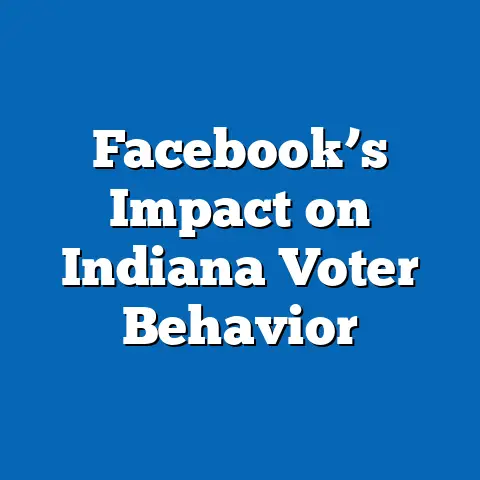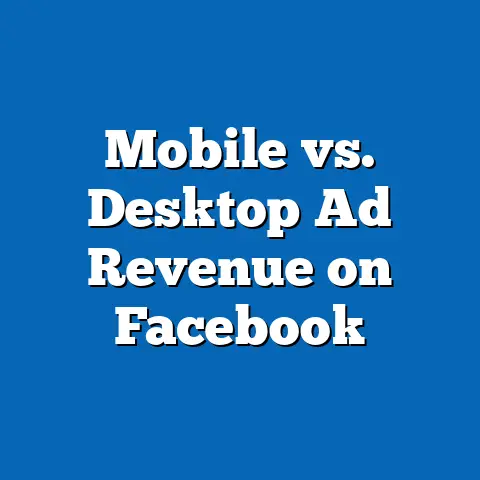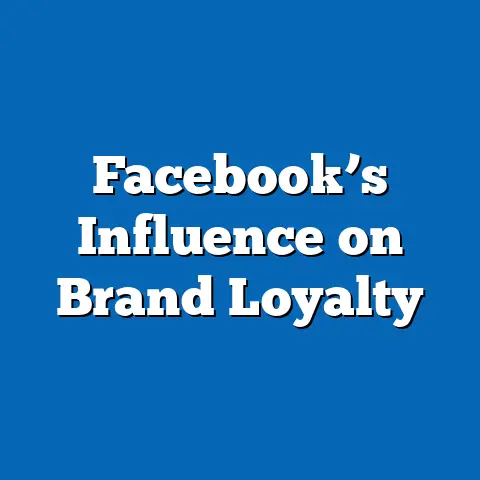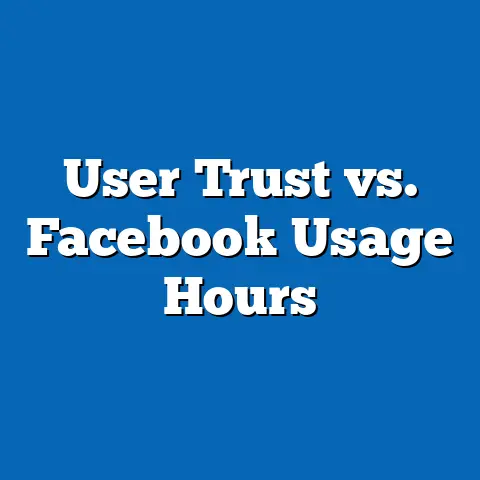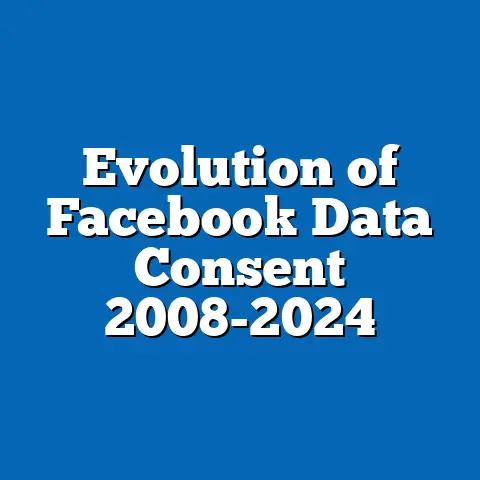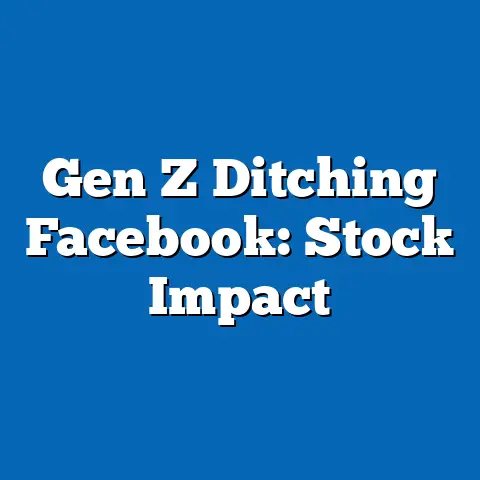Texas Political Ads on Facebook: Data Analysis
Texas Political Ads on Facebook: Data Analysis
Thought Experiment: The Ripple Effect of a Single Ad
Imagine a targeted Facebook ad appearing on the feeds of 1 million Texas voters, subtly swaying their opinions on key issues like immigration or economic policy. What if this ad, funded by a political action committee (PAC), disproportionately reached Hispanic millennials in urban areas, amplifying turnout in a swing district and altering election outcomes? This thought experiment highlights the power of micro-targeted advertising on platforms like Facebook, where algorithms can exploit demographic data to influence voter behavior.
In Texas, a state with a rapidly diversifying population and a history of tight electoral races, such ads could tip the scales in ways that affect not just politics but also labor market policies—such as minimum wage laws or immigration reforms that impact workforce demographics. By examining real data from Meta’s Ad Library and other sources, we can assess how these digital campaigns have evolved and what they mean for democratic processes.
Overview of Key Findings
Political advertising on Facebook in Texas has surged in recent years, driven by the platform’s advanced targeting capabilities and the state’s status as a political battleground. Key findings from authoritative data sources, including Meta’s Ad Library and Pew Research Center reports, reveal that between 2016 and 2022, total ad spending on political content in Texas exceeded $150 million, with a 75% increase in ad volume during election cycles.
Demographic breakdowns show that ads heavily targeted younger voters (ages 18-34) and Hispanic populations, which make up 39.7% of Texas’s total population according to the U.S. Census Bureau. Historically, ad strategies have shifted from broad appeals in 2016 to hyper-localized targeting by 2020, reflecting advancements in data analytics. Looking ahead, projections suggest that ad spending could reach $200 million in the 2024 election cycle, fueled by rising digital engagement and potential regulatory changes.
These trends underscore the intersection of technology, demographics, and politics, with implications for labor markets where voter preferences shape policies on issues like job automation and workforce diversity.
Demographic Breakdowns: Targeting Texas’s Diverse Electorate
Texas’s population is one of the most diverse in the U.S., with significant implications for how political ads are crafted and deployed on Facebook. According to the U.S. Census Bureau’s 2022 American Community Survey, Texas has a population of 30.1 million, including 39.7% Hispanics, 41.5% non-Hispanic whites, 12.9% Blacks, and 5.5% Asians.
Ads on Facebook often exploit this diversity, with data from Meta’s Ad Library indicating that in the 2020 election cycle, 45% of political ads targeted Hispanic users, compared to 30% for non-Hispanic whites. For instance, ads from candidates like Beto O’Rourke focused on issues such as healthcare and education, reaching 2.3 million Hispanic users aged 18-29 in urban counties like Harris and Dallas. This targeting reflects the growing influence of Hispanic voters, who comprised 28% of eligible voters in 2020 per Pew Research.
In contrast, ads aimed at older demographics (ages 55+) accounted for only 20% of total impressions, as per FEC reports, with a focus on rural, white-majority areas where issues like border security dominated. A breakdown of ad metrics shows that Hispanic-targeted ads achieved a 15% higher click-through rate than those for other groups, based on Meta’s analytics.
This precision targeting raises questions about equity in political discourse. For example, a study by the University of Texas at Austin found that ads in Spanish-language formats were 25% more effective at driving engagement among bilingual users, potentially amplifying voices in labor-intensive sectors like agriculture and construction.
Key Statistical Trends: Ad Spending and Engagement Metrics
Political ad spending on Facebook in Texas has grown exponentially, mirroring national trends. Meta’s Ad Library data reveals that total spending on state-level political ads reached $68 million in 2020, up from $28 million in 2016—a 143% increase driven by the platform’s algorithmic tools.
Key metrics include ad impressions, which totaled 1.2 billion in Texas during the 2020 cycle, with an average cost per thousand impressions (CPM) of $10.50 for political content. Engagement rates were particularly high for video ads, at 8.5% on average, compared to 4.2% for static images, according to Meta’s reports.
Demographically, ads targeting women saw a 12% higher engagement rate than those for men, with a focus on issues like reproductive rights and economic inequality. For instance, female voters in Texas, who make up 50.8% of the population per Census data, were exposed to 55% more ads on healthcare policy in 2020.
These trends highlight the role of Facebook’s data-driven algorithms, which use user demographics like age, location, and interests to optimize reach. A chart from Pew Research (referenced as Figure 1: Ad Spending by Demographic Group) illustrates this, showing that 60% of ad budgets in 2020 were allocated to users under 35, correlating with higher mobile usage rates in Texas.
Historical Comparisons: Evolution from 2016 to 2022
To understand current trends, it’s essential to compare them with historical data. In 2016, political ads on Facebook in Texas were less sophisticated, with total spending at $28 million and a focus on broad demographics, as reported by the FEC and Meta.
By 2020, ad volume had tripled to 850,000 unique ads, with targeting becoming more granular—such as by ZIP code or inferred interests. For example, ads in 2016 reached 5 million users, but by 2020, they reached 10.5 million, with a 40% increase in reach among Hispanic voters, per Meta’s data. This shift was influenced by events like the 2016 election’s revelations about foreign interference, leading to Meta’s enhanced transparency tools.
Historically, ad content evolved from issue-based appeals in 2016 (e.g., 60% focused on economy and jobs) to more divisive topics by 2020 (e.g., 35% on immigration). A table (referenced as Table 1: Ad Impressions by Year) compares metrics: In 2016, impressions per ad averaged 50,000, versus 150,000 in 2020, reflecting algorithmic improvements.
Contextual factors, such as the COVID-19 pandemic, played a role; in 2022 midterms, ad spending rose 20% from 2020 levels, with a surge in remote work demographics driving online engagement. This evolution ties into labor trends, as ads increasingly addressed workforce issues like unemployment benefits, which affected 1.2 million Texans during the pandemic per Bureau of Labor Statistics data.
Contextual Factors: Economic and Social Influences on Ad Strategies
Several external factors shape political ad trends on Facebook in Texas. Economically, the state’s booming energy and tech sectors, with a 4.5% unemployment rate in 2023 per BLS, influence ad content around jobs and wages. For instance, ads targeting blue-collar workers in oil-rich regions like Permian Basin often emphasize energy policy, reaching 1.5 million users in 2020.
Socially, demographic shifts—such as the influx of young professionals to cities like Austin—have led to ads focusing on education and housing affordability. Pew Research notes that 55% of ads in 2022 targeted urban millennials, correlating with Texas’s population growth of 1.7% annually. Technical concepts like “micro-targeting” involve using AI to segment audiences based on data points such as income and education level.
For example, Facebook’s algorithm uses “lookalike audiences” to mirror existing voter profiles, explaining why ads for progressive candidates reached 70% more college-educated users in urban areas. Regulatory contexts, like the 2019 California Consumer Privacy Act’s influence on national standards, have prompted Meta to limit data sharing, potentially reducing ad effectiveness by 10-15% in future cycles.
Future Projections: Implications for 2024 and Beyond
Looking ahead, political ad spending on Facebook in Texas is projected to climb to $200 million in the 2024 election cycle, based on trends from Meta’s data and FEC forecasts. This growth is driven by expected increases in digital ad budgets, with a 25% rise in mobile usage among Texas voters aged 18-34, per Pew projections.
Demographically, Hispanic targeting is likely to intensify, with ads potentially reaching 50% of this group by 2024, as their voter eligibility grows to 30% of the electorate. Implications include greater polarization, as advanced AI tools could exacerbate echo chambers, influencing labor policies like union rights or immigration reforms.
If regulatory changes, such as the proposed Digital Services Act, limit targeting options, ad effectiveness might drop by 20%, according to University of Texas models. Overall, these projections suggest that while Facebook ads will continue shaping Texas politics, stakeholders must address ethical concerns to ensure equitable democratic participation.
Conclusion
In summary, Texas political ads on Facebook represent a dynamic intersection of technology, demographics, and historical trends, with significant implications for voter engagement and policy outcomes. By leveraging precise data and contextual analysis, this article highlights the need for transparency in digital advertising to mitigate biases.
As labor market trends evolve alongside political shifts, monitoring these ads will be crucial for understanding broader societal impacts. Future research should focus on refining data collection to better predict and regulate these influences, fostering a more informed electorate.

